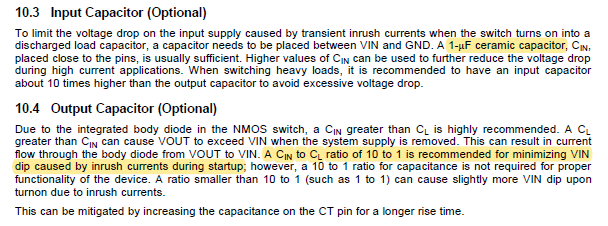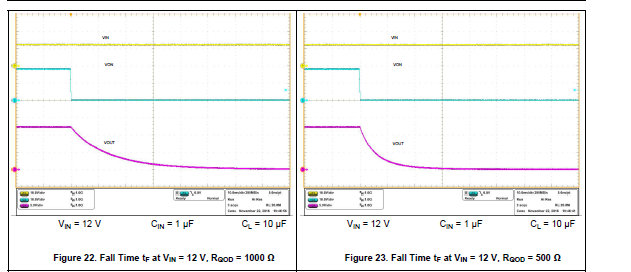I have 2 questions using TPS22810.
TPS22810 uses CL value for the QOD.
.
And this is placed in the Vout.
.
Normally, when using any ic, I learned there needed to be bypass capacitor to reduce noise. Value about 0.1uF.
1. If I use CL capacitor, does CL capacitor acts as bypass capacitor?
2. Cin's recommended value is 1uF in the datasheet. And there also says Cin to CL ratio is 10 : 1 is good for inrush.
But If I use Cl value about 10uF, or 22uF, then this makes C in value to 100uF . Isn't this too big?
In the datasheet page 20, there are some measurement graphs and it used Cin 1uF and CL for 10uF.
.
.
.
Will there be any side effect? In this case Cin to Cl ratio is 1:10 backwards to recommended 10:1 Value.
.
.AND Can I put Vin and En together? Vin is 12V. (Datasheet says like below, 1.8V, 3.3V, 5V can be directly driven. there is no other comments about 12V or others.)





